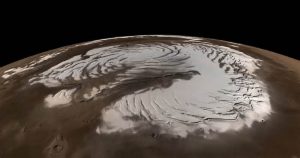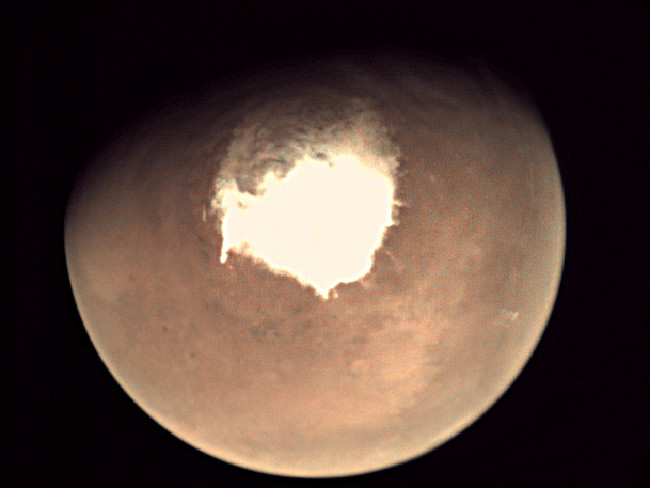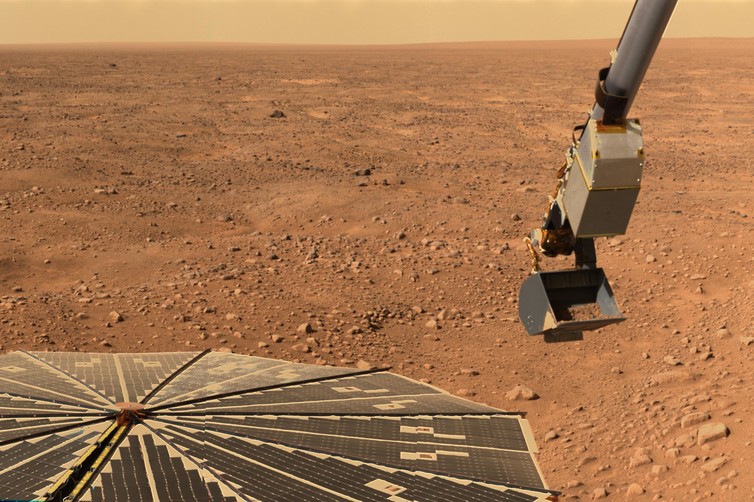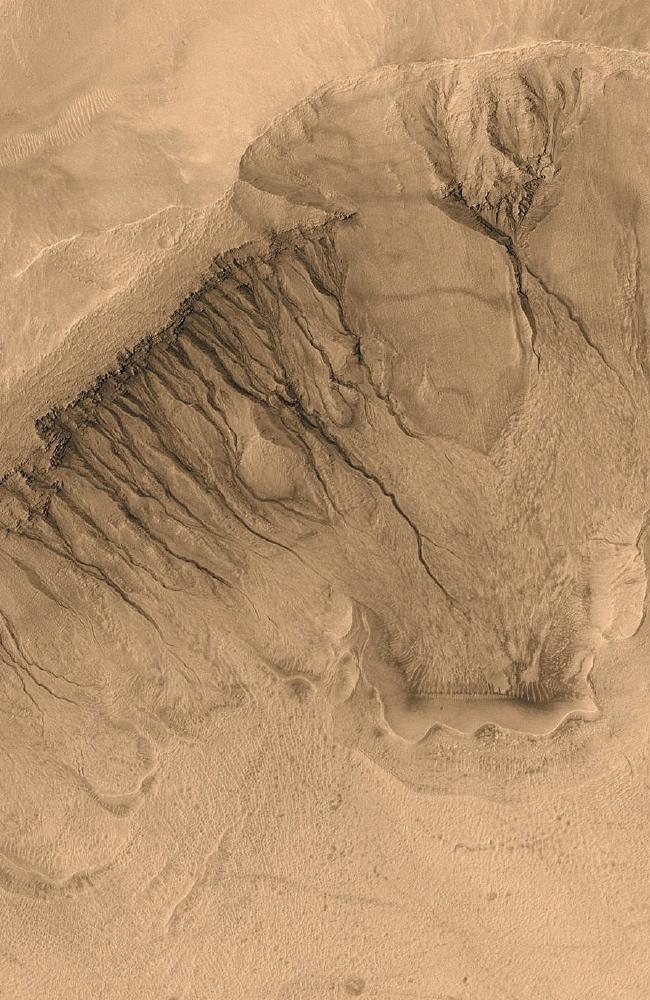
NASA Research: Mars Experiences Turbulent Snowstorms At Night, Snow Falls Faster And Is More Common Than Expected
NASA has been researching about Mars and has a new plan to overcome one of the biggest hurdles with the red planet. The space agency is planning to use Mars’ own atmosphere to create oxygen when it lands a rover for the Mars 2020 mission.
The plan includes bringing microbial life to Mars and using an MIT device called MOXIE to have the organisms create oxygen and harvest it for breathing. Mars emerged from its most recent ice age about 400,000 years ago. Since then, its polar caps have been small, and any ice surviving near the equator has been buried under dust. The planet’s atmosphere is of low pressure and very dry.

Up to now, it was thought that snow falling from low-lying Martian clouds settled slowly and sparsely to the ground in an environment bereft of violent winds. The new findings suggest that ice-water particles swirling in a storm hit the ground within minutes, rather than descending gently for hours.
NASA first came up with the plan in 2014 when it first unveiled the Mars 2020 Rover. MOXIE called the Mars Oxygen In situ resource utilization Experiment was selected from 58 instrument proposals submitted by research teams around the world. The process is a reverse fuel cell that entails transporting microbial life – such as bacteria or algae – from Earth to Mars.

Although it is still possible for clouds to form at an altitude of several kilometers until now it has been generally believed that any true snowfall would not reach the ground. The clouds, resembling Earth’s cirrus clouds, are believed to form when the small amount of water vapor in the atmosphere condenses (directly from vapor to ice) onto grains of dust lofted skywards during storms.
The organisms would then use Martian soil as fuel to pump out oxygen, which could then be harvested and used for breathing. It would eliminate the need to send liquid oxygen stores to Mars. Additionally, it could also be used to make rocket fuelfore return flights back to Earth, offsetting what would be one of the biggest costs of transferring humans back to earth.
The atmosphere of Mars is 100 times thinner than Earth’s, though still thick enough to support weather, including clouds and the wind. But there’s very little moisture. Indeed, the Red Planet is essentially a bone-cold desert with virtually no liquid water on its surface. In the Martian arctic, however, water ice lurks just under a layer of dust.

This was detected up close by NASA’s Phoenix lander, which scraped below the planet’s surface with a shovel in 2008. The new study has found a way in which tiny specks of water-ice could travel down to the ground without this strangely frozen carbon dioxide coat. If correct, this would mean genuine snow on Mars – just like that on Earth. The team used measurements from two orbiting spacecraft to study how temperature varies with height in the Martian atmosphere.
They found that at night, the lower atmosphere below ice clouds can become unstable because it becomes less dense below than above. The Martian atmosphere is 95 percent carbon dioxide (also present as frozen dry ice), along with two percent each argon and nitrogen, with trace amounts of oxygen, nitrogen oxide, neon, and krypton.

If a downdraft powerful enough had occurred, then maybe one morning Phoenix would have woken up to a winter wonderland, instead of the usual red landscape at least for a few hours. NASA’s earlier Martian rover Spirit has previously found silica rocks on the site – which resemble hydrothermal mineral deposits on Earth.
But some scientists doubt whether the Mars 2020 rover will be able to assess whether the silica rocks are truly linked to alien life. NASA will make their final decision a year before the mission’s launch date in July 2020. The rover will then spend two years drilling for rock and soil from the chosen landing site.